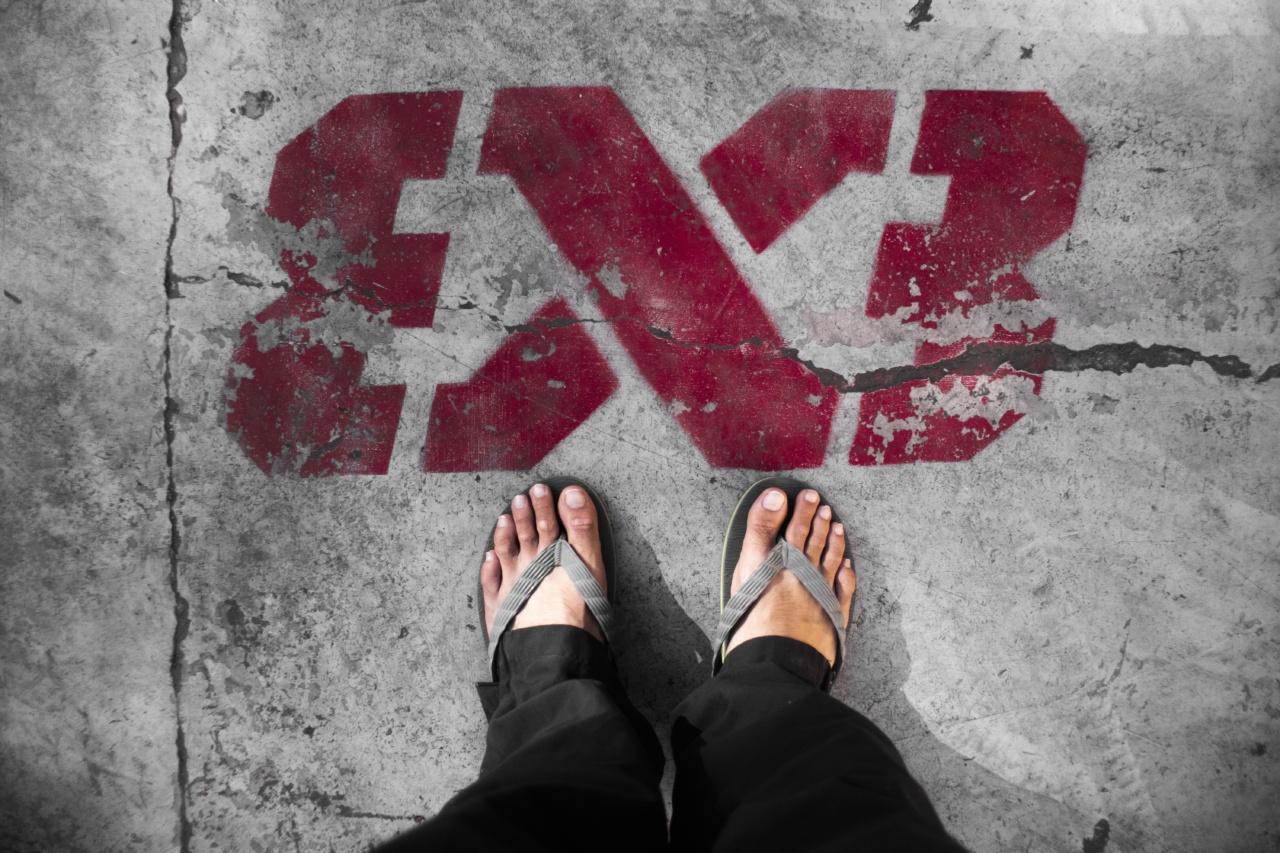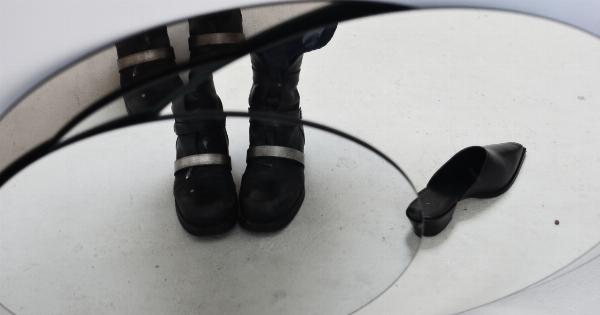Our feet are essential body parts that help us stand and walk, but we often forget to take care of them until they start causing pain or discomfort. Many everyday habits can damage our feet, including:.
1. Wearing Ill-Fitting Shoes
Wearing shoes that are too tight or too loose can cause blisters, corns, calluses, and even deformities like bunions or hammertoes. Invest in shoes that fit well and provide comfort and support.
2. Walking Barefoot
Walking barefoot is a common habit that can expose our feet to injuries, infections, and warts. Always wear appropriate shoes or sandals in public areas to protect your feet.
3. High Heels
High heels can cause various foot problems, such as plantar fasciitis, Achilles tendinitis, and metatarsalgia. Limit your use of high heels and choose shoes with a lower heel or wedge.
4. Neglecting Foot Hygiene
Not washing your feet regularly or drying them thoroughly can lead to bacterial and fungal infections, unpleasant odor, and skin irritations. Wash your feet with soap and water daily, and apply moisturizer to prevent cracking and dryness.
5. Smoking
Smoking can affect blood circulation, which is essential for healthy feet. Poor circulation can lead to numbness, tingling, and slow healing of wounds and ulcers.
6. Sitting for Long Hours
Sitting or standing for prolonged periods can affect blood circulation and cause edema, swelling, and cramps in the feet and ankles. Take breaks and stretch your legs and feet regularly.
7. Over-Exercising
Over-exercising or not warming up properly can strain the muscles, tendons, and ligaments in your feet and lead to injuries like sprains, fractures, or plantar fasciitis. Always warm-up before exercising, and wear appropriate shoes with good support.
8. Tight Socks or Stockings
Wearing tight socks or stockings can restrict blood flow and cause numbness, tingling, or blisters. Choose breathable and comfortable socks or stockings that fit well.
9. Using Old Shoes
Old shoes can lose their support and cushioning, which can lead to foot fatigue, heel pain, and even injuries. Replace your shoes regularly, especially if you use them for running or other sports activities.
10. Ignoring Foot Pain
Ignoring foot pain or discomfort and continuing your daily activities can worsen the condition and lead to chronic problems like arthritis or fasciitis. Rest and seek medical attention if you experience persistent or severe pain in your feet.
11. Applying Too Much Pressure on Toes
Applying too much pressure or force on your toes, for example, by wearing pointy shoes or standing on tiptoes, can lead to ingrown nails, corns, or calluses.
Wear shoes with enough toe space and avoid wearing high heels or standing for extended periods.
12. Going Barefoot in the Shower
Walking barefoot in public showers or gym locker rooms can expose your feet to fungal infections like athlete’s foot. Always wear flip flops or shower shoes to protect your feet.
13. Skipping Warm-Up Stretches
Skipping warm-up stretches can increase the risk of injury and strain in your feet, especially if you do high-impact activities like running or jumping. Always warm-up and stretch your feet and legs before exercising.
14. Standing on One Foot
Standing on one foot, for example, while changing shoes or tying laces, can strain the muscles and tendons in your feet and cause pain and discomfort. Use a bench or seat to sit when changing shoes or socks.
15. Playing Sports Without Protective Gear
Playing sports without using protective gear like shin guards or ankle braces can increase the risk of foot and ankle injuries like sprains, fractures, or Achilles tendinitis. Always wear the appropriate protective gear when playing sports.
16. Wearing Flip Flops for Extended Periods
Wearing flip flops for extended periods can lead to strains, blisters, or plantar fasciitis, due to the lack of support and cushioning. Choose flip flops with thicker soles and arch support if you plan to wear them for prolonged periods.
17. Wearing Socks with Holes
Wearing socks with holes or thinning areas can cause blisters, friction, and skin irritations. Replace your worn-out socks with new ones regularly to avoid foot problems.
18. Not Moisturizing Cracked Heels
Ignoring cracked or dry heels can cause discomfort, pain, and infections. Apply moisturizer or foot cream to your feet daily, focusing on the heels and soles, to prevent dryness and cracking.
19. Using Scissors to Trim Nails
Using scissors or sharp tools to trim your toenails can lead to ingrown nails, infections, or injuries. Use a proper toenail clipper and trim your nails straight across to avoid complications.
20. Ignoring Foot Arch Pain
Ignoring foot arch pain or flat feet can cause instability, deformities, or chronic problems like plantar fasciitis. Seek medical advice and use supporting devices like arch pads or custom-made orthotics.
21. Using Hot Water or Heating Pads on Swollen Feet
Using hot water or heating pads on swollen feet can worsen the inflammation and pain. Use cold compresses or ice packs to reduce the swelling and inflammation.
22. Walking on Uneven Surfaces
Walking on uneven surfaces like rocks, gravel, or hills can strain your feet and ankles and cause injuries like sprains or fractures. Be careful when walking on such surfaces and wear appropriate shoes with good support.
23. Not Drying Your Shoes Properly
Not drying your shoes properly can lead to bacteria and fungi growth, unpleasant odor, and infections. Remove the insoles and let your shoes dry in a well-ventilated area after each use.
24. Sharing Footwear
Sharing footwear can increase the risk of fungal infections like athlete’s foot or toenail fungus. Always wear your own shoes, socks, and sandals to avoid contamination.
25. Wearing High Heels for Driving
Wearing high heels while driving can affect your balance and control and increase the risk of accidents. Wear comfortable and flat shoes while driving.
26. Smoking or Drinking Alcohol
Smoking or drinking alcohol can impair blood circulation, which can affect the health of your feet. Avoid smoking and excessive drinking, and maintain a healthy lifestyle.
27. Not Speaking Up About Foot Problems
Not speaking up about foot problems or discomfort to your doctor or podiatrist can delay the diagnosis and treatment and worsen the condition. Seek medical advice if you experience persistent or severe pain, swelling, or any other foot problems.
28. Ignoring Diabetes Foot Care
Ignoring diabetes foot care can lead to serious complications like ulcers, infections, or amputations. Consult your doctor or podiatrist regularly and follow the recommended foot care routine.
29. Using Inappropriate Footwear During Pregnancy
Using inappropriate footwear during pregnancy, such as high heels or tight shoes, can increase the risk of foot and ankle swelling, edema, and pain. Choose shoes with a wider toe box and low to medium heel during pregnancy.
30. Not Wearing Shoes at Home
Not wearing shoes at home can expose your feet to injuries, cold, or bacteria and fungi from the floor. Wear comfortable and supportive shoes or slippers at home.
Conclusion
Our feet are crucial for our mobility and overall health, and we should take good care of them by avoiding the habits that can damage them.
By wearing appropriate shoes, practicing foot hygiene, seeking medical advice when needed, and maintaining a healthy lifestyle, we can prevent foot problems and lead a pain-free life.




























